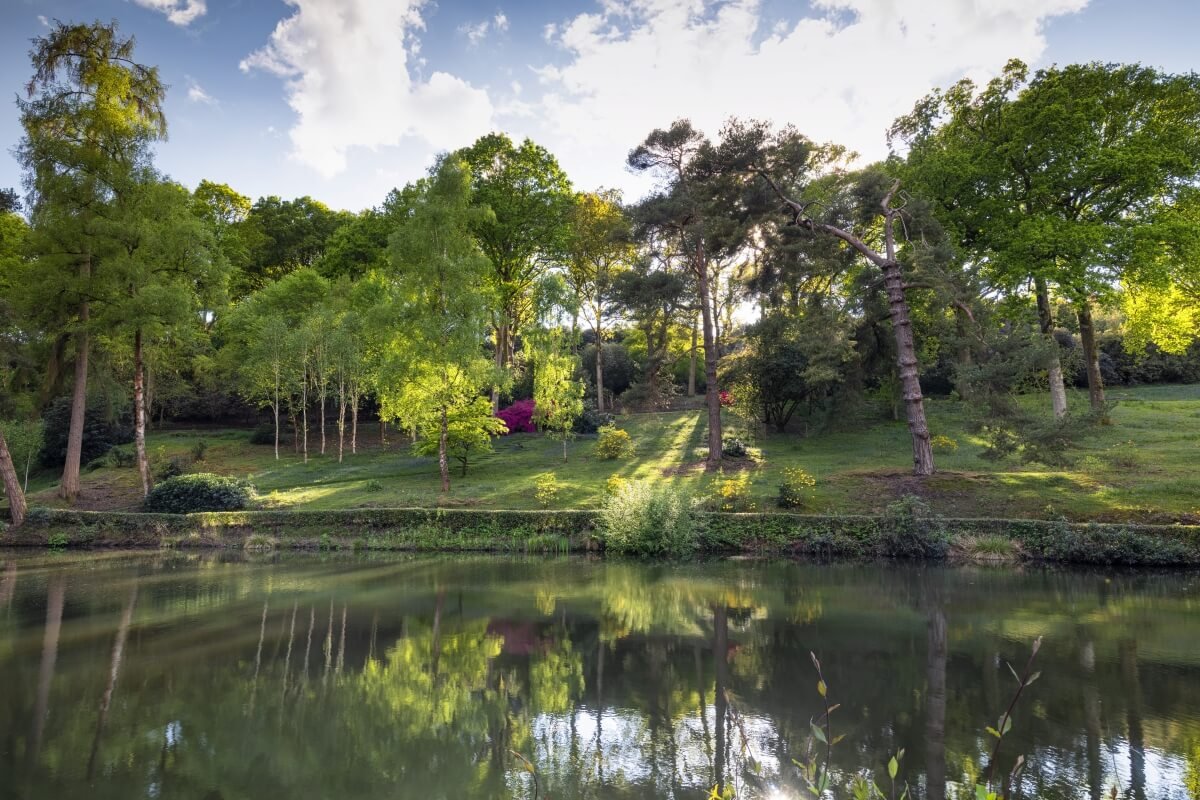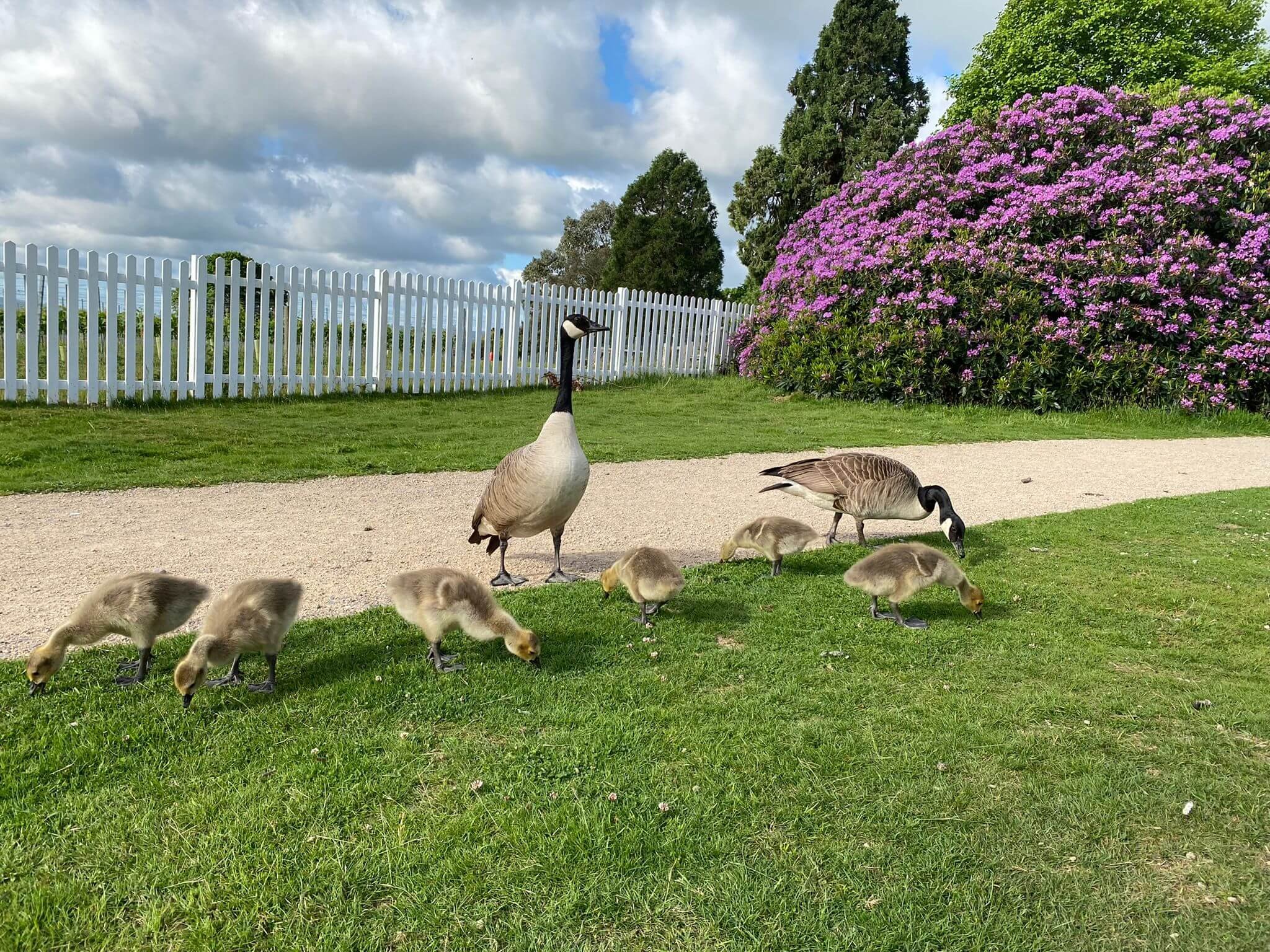History, Lakes and Wildlife
Leonardslee Lakes & Gardens offers peace and tranquility as you meander down towards the seven-interlocking lakes, at the heart of the 240-acre estate, and embrace the breathtaking views while learning about our rich history. It is known that the history of this estate dates back to the Middle Ages, with the name Leonardslee deriving from the 'lea’ or valley of St Leonard's Forest, one of the ancient forests of Southern England.
A step back in time
Sir Edmund Loder, the former owner of the estate from 1899 until his death in 1920, was a flora and fauna enthusiast. His two most famous contributions to the estate are his beautiful collection of Loderi Rhododendrons and the Rock Garden.
From 1901 Sir Edmund Loder began breeding Rhododendrons that would go on to be seen as the most important Rhododendron hybrids in the World. ‘Loderi’ Rhododendrons were developed by crossing of species Rhododendron griffithianum obtained from South Lodge across the road, with his Rhododendron fortunei. Sadly, he was unable to experience the full beauty of his work with some hybrids not flowering until after his death.
Sir Edmund sought to create a natural habitat for ferns and alpine plants he collected, now known as our Rock Garden. The skilled Pulham & Sons craftsmen learnt to craft rocks to suit his specific requirements as natural rocks were not readily available, as they had been doing it at various other gardens for some time. They combined large stone and a unique, concrete-like material called ‘Pulhamite’ to create a natural setting. Visitors are also welcomed to visit our peaceful Rock Garden that is still being here as it once was.
The Loderi Garden is where visitors can see the most complete collection of Loderi Rhododendrons, some of them being over 100 years old. A smaller and younger collection can be found across the valley in the Coronation Garden.
Lakes
Our lakes are a major focal point for the gardens. With seven interlocking lakes that cover around 6-acres in surface area, they are a key highlight for our visitors and each with their own history.
From North to South, you will find: Clapper Pond, Leucothoe Pond, Mossy Ghyll Pond, Middle Pond, and Engine Pond which was created between 1852 and 1874, Waterfall Pond was enlarged in the late 20th century encompassing an earlier body of water named Beaver Pond between 1899 and 1947 and New Pond.
Our original lakes were once referred to as the Hammer Ponds, they were originally excavated for iron ore in the 16th century as part of the Wealden iron industry. Where they produced cannon and cannonballs, firebacks, hinges, horseshoes and nails. The Engine House that sits to the south end of Engine Pond was once used to pump water up to Leonardslee House.
The lakes today are filled with interesting fish including huge Common Carp and brightly-coloured Koi Carp, as well as smaller species such as Perch, Rudd and Minnows. As well as our beautiful water birds that can regularly be spotted flying overhead or wading in the shallow waters. With many different water birds, our visitors can see a range including herons, kingfishers, wild mandarin ducks, cormorants and our Canadian geese.
Wildlife
Leonardslee Lakes & Gardens offers a perfect environment for our wildlife to thrive in, including our endangered insects that call our lakes their home.
Sir Edmund Loder, during 1889 –1920 introduced an extensive collection of rare animals to the estate. Including our famous wallabies, beavers, bush turkeys, swamp deer, capybara, cavies, prairie dogs and emus. Our resident wallabies you can see today are descendants of the original mob brought over from Tasmania. Visitors can watch as our free roaming wallabies enjoy basking in the summer sun and visit the maternity enclosure to see our baby joey’s as they grow.
Leonardslee is now home to a large collection of diverse wildlife, keep an eye out for scarce Chaser dragonflies while exploring this Summer. The males have distinctive blue bodies and the females have yellow bodies. You may also see huge Emperor Dragonflies patrolling over the lakes, tiny White-legged Damselflies floating around the rushes, or the locally scarce Downy Emerald, which has a shiny dark green body.













